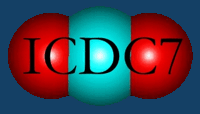 | AN ABERRATION IN THE GLOBAL CARBON CYCLE 55 MILLION YEARS AGO |
 by James C. Zachos by James C. Zachos
Approximately 55 million years ago (Mya) at the
boundary between the Paleocene and Eocene epochs (P-E boundary), the Earth
experienced an extreme global warming event that persisted for several tens of
thousands of years, and which triggered short- and long-term changes in marine
and terrestrial ecosystems. Several lines of evidence suggest that the warming
was caused by the sudden decomposition of marine methane hydrates which
ultimately released >2000 gigatons of carbon (GtC) to the atmosphere. In
theory, a large portion of this carbon would have been absorbed by the ocean,
thereby lowering the ocean pH, and initiating a neutralization process
involving the massive dissolution of seafloor carbonate. This process would
enable the ocean to absorb and temporarily store additional carbon. Permanent
sequestration of this excess carbon, however, would occur gradually through a
number of negative feedback processes such as the burial of organic carbon. Quantitatively,
the most important feedback should be the chemical weathering of silicate
rocks, and eventual redeposition of carbonate on the seafloor. Here, I discuss
the evidence used to constrain the magnitude of changes in ocean carbon
chemistry 55 Mya, and implications for future carbon cycle feedbacks.
Link to Abstract
Link to Slides
|
|
|
|
| |
| Login |  |
| Related Links |  |
| Options |  |
|












